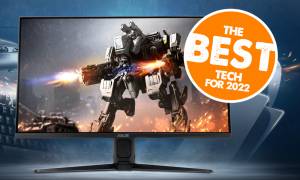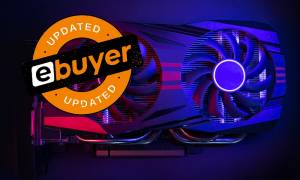Hybrid working is not quite the ‘new thing’ some might believe, and nor does it look like a temporary trend either. Although the practical demands of the pandemic shifted many people from office to home and to a combination of the two, in actual fact hybrid working has been in operation for some forward-thinking businesses since long before Covid-19.
When necessary, employees have the opportunity to knuckle down to their work without the distractions presented by a modern office – the noise, the interruptions and so on – while also being able to go into the office for more focused time – for instance, meetings or to ‘touch base’ with colleagues. In terms of a general work/life balance, the hybrid model is essential in keeping a happy workforce, as it reduces transport costs and also offers a little more quality time at home – both of which are talked about in more detail in our recent extensive guide to hybrid working.
Whether you are at home or in the office, having the right tech for hybrid working is essential. You can’t transport a full desktop PC between your home and office, so your laptop is your workstation wherever you are, and so it needs to be as up to the job as you are! What are the things you need to look out for when considering a new laptop for hybrid working – and, of course, what are the best laptops?
ASUS X515EA

The ASUS X515 has an overall weight of just 1.8 kg, which means you can take it around with you without much hassle. It has a good screen size so you’ll be able to get cracking on your work with no visual discomfort. The matte anti-glare coating copes with the reflectivity issue and leads to a satisfying display. You’ll really be able to focus on your work!
HP ZBook Fury G8

The ZBook Fury has an i7 processor and a 15.6″ screen, and is perfect for creatives. You can engage in ‘standard’ office work or you can create, render, edit, and simulate with ease.
Things to think about re: the best laptops for hybrid working
Weight
The weight of your laptop might not seem like the most important thing to think about when you’re looking at a new model – but in actual fact it can have a bit of a bearing on how you feel about the device! Imagine having to lug around a heavy laptop on public transport to and from the office. That’s hardly what you’d call a conveniently ‘portable’ device, is it? It’s not going to be a satisfactory experience for you.
There are many models on the market now which are lightweight, or at the very least a truly manageable weight. This is usually dictated by the internal components used, as well as the ports and more. Ultra-thin laptops are much lighter than thicker models. ‘Normal’ hard drives are bigger and heavier than SSDs (solid-state drives), so in addition to having much faster operating speeds, SSDs can have the physical benefit of reducing the weight of your laptop too.
Another thing which can – obviously – have a direct bearing on the weight of your laptop is its size, which is dictated by the screen size.

Screen size and resolution
A decent screen size for a laptop is 15” (or around that). This is probably the most common choice – though there are also plenty of laptops available which have bigger screen sizes than that. If your work involves anything highly visual – such as graphic design, photography or video editing – then you’ll definitely want to ‘go large’. But 15” is workable for most, if not all, office-type tasks and gives users a reasonable viewing area.
You could also go for a laptop which has a HD display. The minimum standard resolution you should look for is 1080p (Full HD). This would mean your work can be seen crisply and clearly – so it’ll be much easier on the eyes (thus reducing eye strain and headaches). Don’t forget that, if that laptop has the number of ports to take it, you could connect an external monitor if needs be.
Apple MacBook Pro M1

The Apple M1 chip in this MacBook Pro laptop means you can handle creative tasks as well as take on your normal admin / office duties. Plus, with SSD storage, you’ll be able to save files, load programs and access huge video and image files at super-speed!
Lenovo IdeaPad 1

This is one for those who will be hopping about and on the go. Perfect for using on public transport, say, or at a location between work and home. It features reliable Intel® Pentium® processors and a long-lasting battery, a 14″ FHD display and Dolby Audio™ speakers. Perfect for when you are on the go.
Connectivity
We just mentioned that you could hook up an external monitor to your laptop if you want to. When you break it down into the simplest terms, the laptop is four things in one – a computer, plus a built-in keyboard, mouse and monitor. You can connect external versions of each of these to enhance your experience, and just use the laptop’s computing power rather than its incorporated features. These days most keyboards, mice and monitors use a simple USB connection, so the number of ports on any prospective laptop you might go for should be considered.
You may also wish to connect a printer, and some form of external storage – an SSD or HDD for backing-up your documents, files and data, for instance. Again, you should consider the type and number of connections you might require for this. Also worth considering is whether the laptop has some sort of audio port so that you can connect your headphones or external speakers.
Connectivity also means the ability of the laptop to connect to the internet – an essential part of just about everything we do these days. Emails, online meetings, access to documents on central servers, streaming content… it all requires an internet connection. Does the laptop you are looking at have built-in Wi-Fi capability (almost all of them do), or might you require an ethernet port or a ‘dongle’?
Capability
What about the specs for the laptop you’re thinking of getting for your hybrid working pattern? What type of processor does it have, how does it handle graphics? These are the immediate considerations. A i5 processor is not really going to cut it for the most ‘high-end’ work, but it will be more than adequate for admin-type work. And as the iteration of processor increases – i3, to i5, to i7 – so does the power of the laptop. Meaning it will work faster at handling your inputs.
You should also look for a laptop that has a battery life which will ensure you don’t run out of ‘juice’ in the middle of something important while you’re out and about. So, a laptop which gives at least six hours of power on a full charge is the goal here.

Laptop bag
Easy to overlook this one in the rush to just get the best laptop. You’ll need something to carry it around in if you’re going to be a hybrid worker. Something that is the appropriate size for your laptop to fit into snugly and securely is going to be the right choice, and there are many bags, cases and backpacks which fit this description.
Many backpacks and laptop bags also have other pockets in which you can store peripherals (such as an external keyboard and mouse, or an external storage drive), as well as paperwork and maybe even your mobile phone and keys!
So those are the main things you should look out for, and the best laptops for hybrid working. As ever at Ebuyer we stock a massive array of quality laptops, and you can check them out here. Happy hybrid working!

























